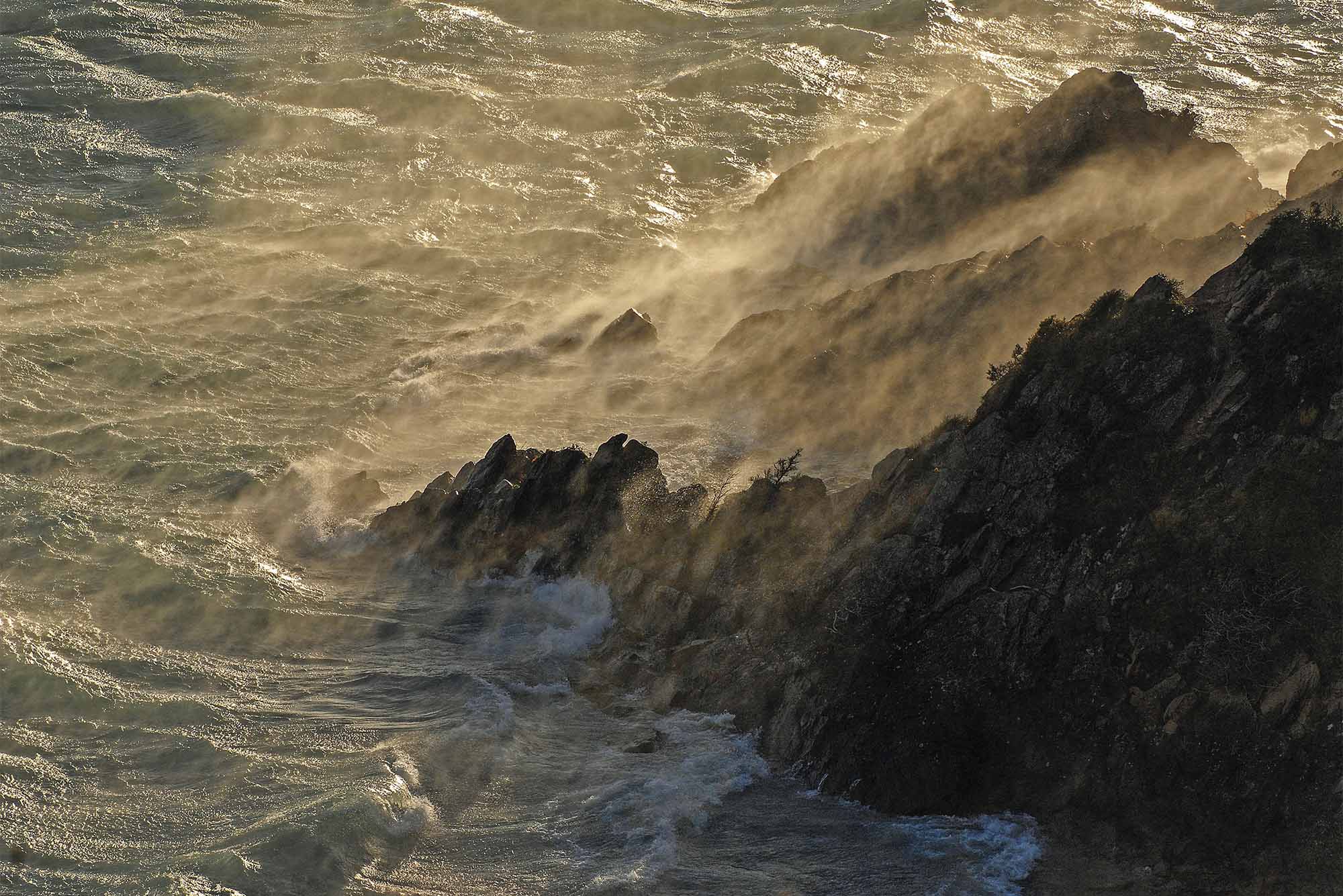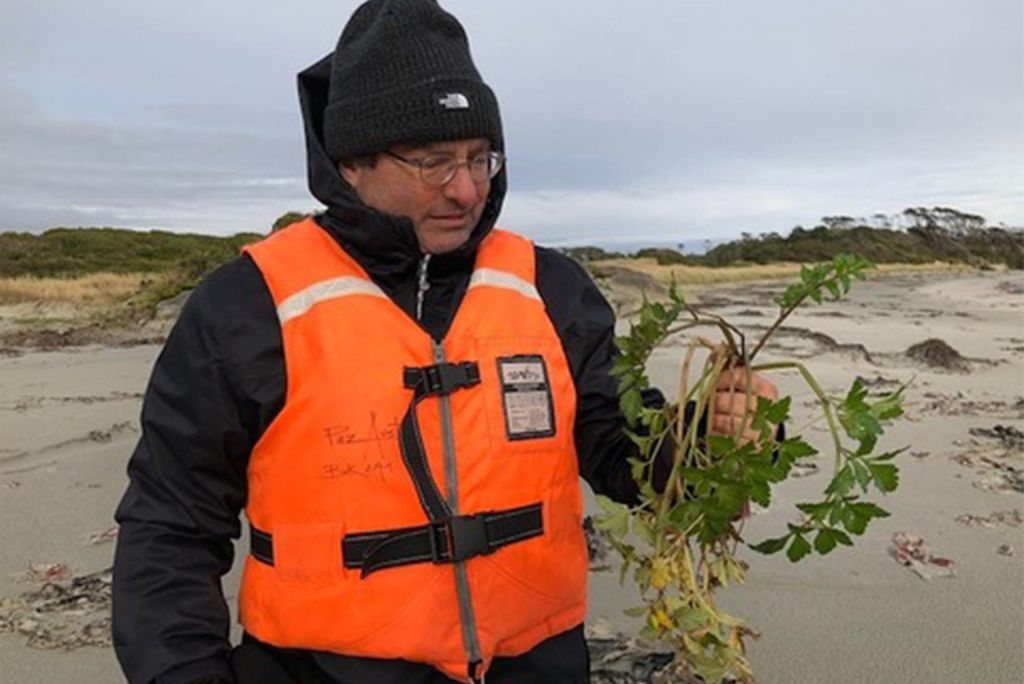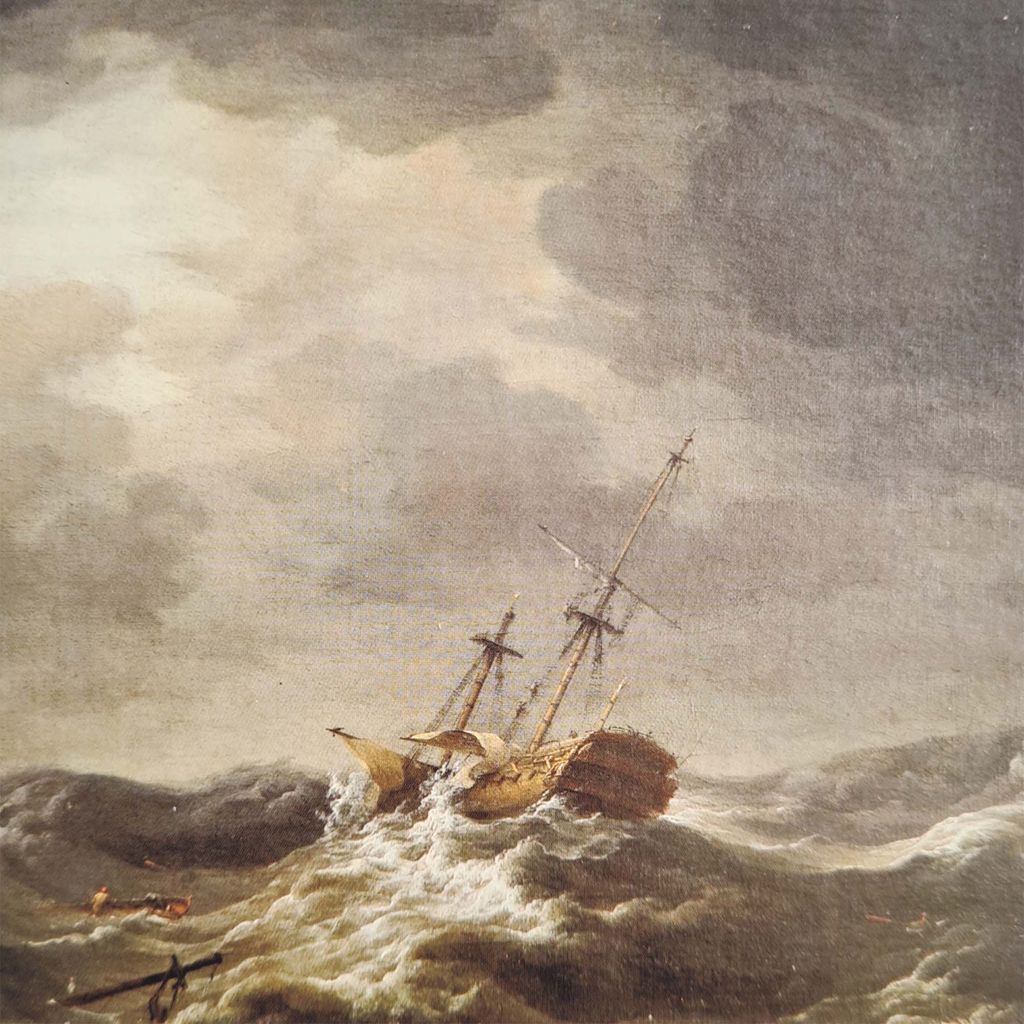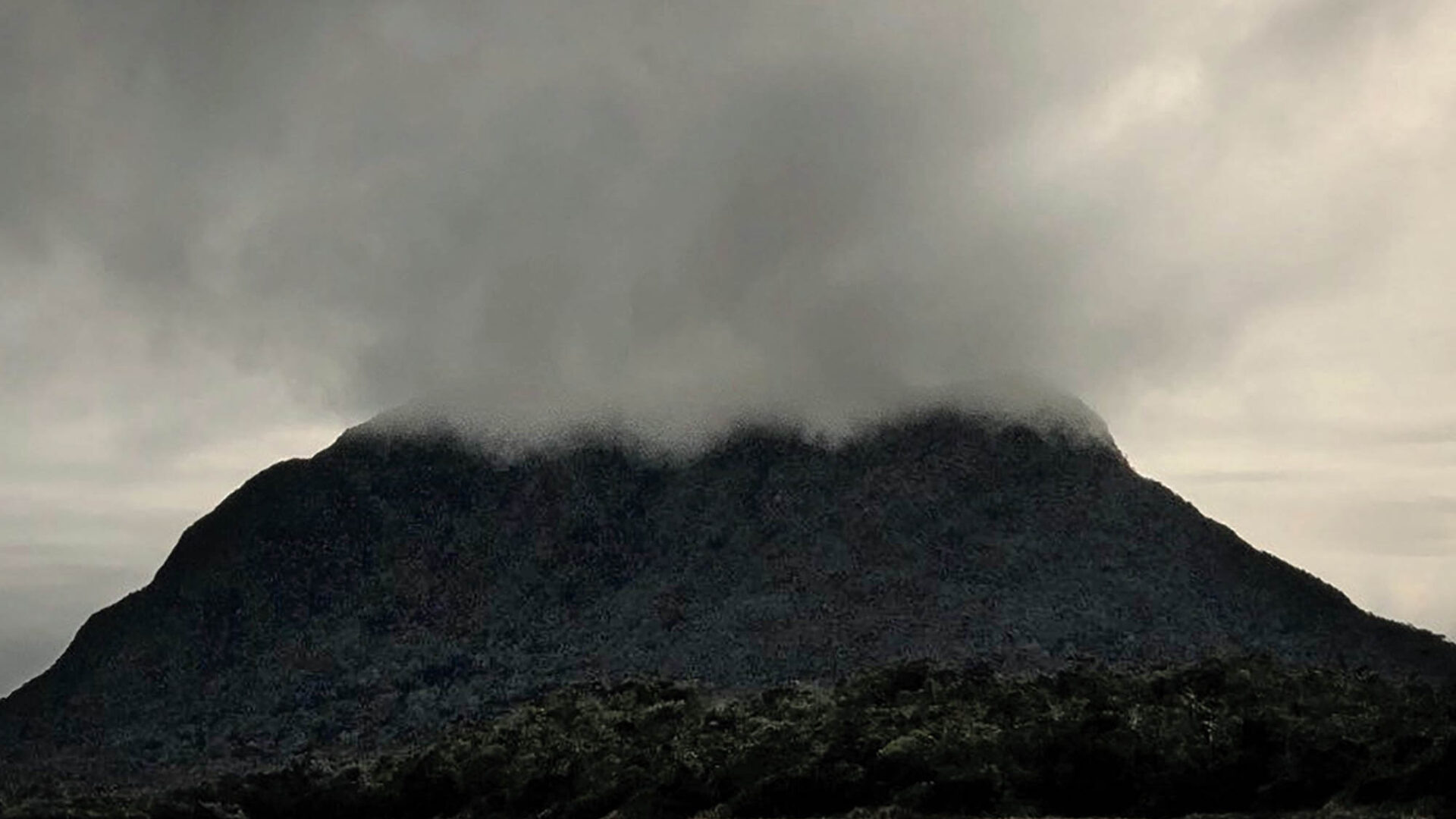Shipwreck, Mutiny, and Murder: Alum David Grann’s New Book, The Wager, Is a High-Seas Adventure

The castaways from the Wager were stranded off the Chilean coast of Patagonia in some of the most dangerous seas in the world, Grann writes. Photo by Ivan Konar/Alamy
Shipwreck, Mutiny, and Murder
Author and alum David Grann follows his best-selling Killers of the Flower Moon with a new nonfiction book, The Wager, an 18th-century thriller on the high seas
David Grann loves a good adventure. It’s the reason his books are filled with harrowing criminal investigations, expeditions gone wrong, and fortunes gained and lost; it’s also why he has a habit of traveling to the ends of the earth to conduct his research. Grann (GRS’94) is known for his exhaustive world-building and attention to detail, which has won the New Yorker staff writer high praise and comparisons to Truman Capote. Perhaps the most characteristic element of a Grann story is that it’s more than the sum of its parts: the stories may be thrilling, but they are not meant to simply entertain.

“Often, these situations become laboratories that test the human condition under very extreme circumstances,” Grann says. “Inevitably, they begin to reveal the hidden nature of each person, both the good and the bad.” Grann’s work has made no small impact on his readers—or on Hollywood; his first book, The Lost City of Z: A Tale of Deadly Obsession in the Amazon (Doubleday, 2009), was adapted into a movie in 2016. The film adaptation of his book Killers of the Flower Moon: The Osage Murders and the Birth of the FBI (Doubleday, 2017) debuted at the Cannes Film Festival this past spring, with a US release slated for October. Directed by Martin Scorsese and starring Leonardo DiCaprio, Robert De Niro, and Lily Gladstone, the story centers on the mysterious murders that terrorized the Osage Nation in Oklahoma in the 1920s, later investigated by a nascent FBI.
Grann’s newest adventure, The Wager: A Tale of Shipwreck, Mutiny, and Murder (Doubleday, 2023), is a “[r]emarkable…finely detailed…ripping yarn” (Boston Globe) set in the mid-18th century, at the height of imperial naval warfare in Europe. The British Wager is chartered to capture a Spanish galleon laden with treasure, and in its pursuit is forced to navigate around Cape Horn, home to some of the most hostile seas in the world. After a journey beset by misfortune, the Wager wrecks on a desolate, freezing island off the Chilean coast and the survivors have to make it back home halfway across the world. Amazingly, some of them do—only to be brought up on treason charges for engaging in a mutiny. Their former captain stands accused of murder.
Grann organized his book around the meticulously preserved narratives of three survivors who must tell their versions of the truth convincingly enough to escape the gallows. Praised by the New York Times as “an engrossing survival story” and Time magazine for reading “like a thriller,” The Wager is also being adapted for the screen by Scorsese and DiCaprio.
Bostonia asked Grann about his research process—which included a fraught three-week journey through a corner of Chilean coast known as the Gulf of Sorrows—his abiding fascination with mutinies, and the men whose firsthand accounts of misadventure at sea became The Wager.
Q&A
With David Grann
Bostonia: How do you find your stories? What’s the eureka moment?
David Grann: I’m always struck, when I look back, by how many of my books have come from some letter or document or photograph that then holds some clue to a larger, fascinating story. And that’s certainly what happened with The Wager. I was doing some research on mutinies and I came across an 18th-century journal written by John Byron, who had been a 16-year-old midshipman when the Wager set out, and it was written in this old, stilted prose.
Wager Island today. Photo by David Grann
I kept being held spellbound by these descriptions of typhoons and tidal waves and ships breaking apart, and then the shipwreck and starvation and the warring factions in this real-life Lord of the Flies on this island. When I began doing more research, I learned that what was fascinating was not only what had happened on the island, but what had happened after several of the castaways made it back to England. After everything they’d been through, they were summoned to face a court-martial for their alleged crimes. After waging a war against all the elements, they began to wage a war over the truth, because if they didn’t tell a convincing tale they could be hanged.
I realized that this old 18th-century journal felt like a parable for our own turbulent modern times; there was misinformation and disinformation, even allegations of a kind of 18th-century form of fake news. There was also a struggle over who gets to tell the history and efforts by those in power to cover up the sinful parts of the Empire’s past. That’s when I thought, well, this is a story worth digging into.
Bostonia: Why were you researching mutinies?
I’m drawn to these stories with expeditions or ships, where people are held in claustrophobic circumstances and their characters get tested under extreme circumstances. The stories are gripping, but they often allow you to shed light on what is always the essential riddle for all of us, which is, what the hell is the human condition? And what causes us to do good things and bad things, to sacrifice ourselves or to sacrifice others?

These stories bring those themes to light and show human beings tested at the most fundamental levels, where their very existence is at stake. And mutinies are always interesting because they take place within military institutions—these organizations designed by the state to be instruments of order. So, what causes these enforcers of order to suddenly disorder? Are they extreme outlaws, or is there something possibly rotten within the system that justifies the rebellion?
Bostonia: Tell us about the survivor accounts you focus on. What was it like to construct a narrative out of such contradictory texts?
I structure the account around the perspectives of three members of the Wager who are each trying to shape their story and to emerge as the hero. One perspective is from the captain, David Cheap. He was plagued by debts and embittered by frustrations and failures, but on this voyage he had attained what he had always dreamed of, which was to become captain of his own warship—that is, until the wreckage.
The second perspective is from John Bulkeley, who was the ship’s gunner and was, in many ways, the most skilled seaman on the Wager. He knew that he could never become captain of a warship because he didn’t come from the aristocracy. But on that island, in that democracy of suffering, perhaps he might be able to emerge a commander in his own right. The third perspective is from midshipman John Byron. Unlike so many of the other people on this voyage, many of whom were pressed [into service], Byron volunteered. He hoped to write his own romantic tale of the voyage, but of course everything went downhill and he had to come of age amid the horrors that are unleashed by the elements and by his own shipmates.
What’s striking about this expedition is that nobody is a reductive hero or reductive villain; they are these complex, flawed, fallible humans. One moment you might admire someone’s act of gallantry, and then not long after be shocked by that very same person’s act of brutality.

Bostonia: Where else did you pull your research from?
There was an almost astonishing trove of firsthand materials for this story, even though it took place in the 1740s: logbooks, muster books, diaries, journals, correspondence, court-martial records, admiralty reports, various treatises, and newspaper accounts. So many of those firsthand materials survived a voyage around the world and, in some cases, some of them survived hurricanes, naval battles, and several of them even survived the shipwreck. These documents are extremely brittle now and they crumble in your hands, but you could take them out of the boxes and read them, often with the help of a magnifying glass. Many of the logbooks document the expedition day by day.

I was also reading treatises on scurvy, and I have a whole section of books on medical diseases and treatments, documents on naval battles and amputations, sailors’ lingo back then, how they dressed, books about Cape Horn and the physical and geographic conditions that made the seas among the worst in the world. I spent about two years combing archives and reading the materials, but after a while, I began to wonder how I could fully understand what these men, and in many cases, boys, went through on this island unless I went there. That’s when I made the somewhat foolish decision to make my own expedition.
Bostonia: Is that so?
I found a Chilean captain to take me there. It took about four days to even get to Chiloé Island, where we departed from, which is about 350 miles north of what is now known as Wager Island. We initially traveled through the Patagonia channels, which are very sheltered and very beautiful, but at a certain point, the captain says, “If we’re going to get to the Wager, then we have to go out into the open ocean.” And I was like, “Oh, okay.” And that’s when I got my first glimpse of these terrifying seas. The boat was just being tossed about like a tin can. You couldn’t stand or you would get thrown and you might break a limb, so I just sat on the floor of the boat for hours and hours a day.

Thankfully, my captain was very capable; he was a very skilled seaman and he got us to Wager Island. I was all bundled up in long johns, a turtleneck, sweaters, jackets, wool hat, gloves, boots, and yet I was still cold. It was about 30 degrees, it was raining, it was unrelentingly windy. After that visit to the island, I began to understand why a British captain later described it as a place where the soul of man dies in it. Being there, I said, “Okay, yeah, my soul could have died here.”
Bostonia: Is this ultimately a man versus nature story, or man versus man?
I think both. It begins as a man versus nature story, and then becomes a man versus man story. It’s also about systems of injustice and the systems of imperialism against other peoples—even sometimes against the very people who are carrying it out. I think, ultimately, what the men of the Wager discover is that the most unpredictable creature in all of nature is desperate humans.
Bostonia: Congratulations on Killers of the Flower Moon. What was the most gratifying part of the filmmaking process?
I’ve been obviously so honored and privileged that Scorsese has directed my last book. For me, what’s been so gratifying is not so much the collaboration between me and the filmmakers, but the collaboration between filmmakers and members of the Osage Nation, who have been so deeply involved in the development of this film.

There are Osage actors with speaking roles, many of whom weren’t actors beforehand. There were Osage experts and language consultants, which has been an effort by the Osage Nation to revive the language over the last few decades. My hope in telling that story was that it would share some of that history with others, and we know that a movie can reach even more people. So, when Scorsese and DiCaprio read The Wager before it came out and said, “We’d like to team up again,” I was like, “Great. I could not be in better hands.”


Comments & Discussion
Boston University moderates comments to facilitate an informed, substantive, civil conversation. Abusive, profane, self-promotional, misleading, incoherent or off-topic comments will be rejected. Moderators are staffed during regular business hours (EST) and can only accept comments written in English. Statistics or facts must include a citation or a link to the citation.